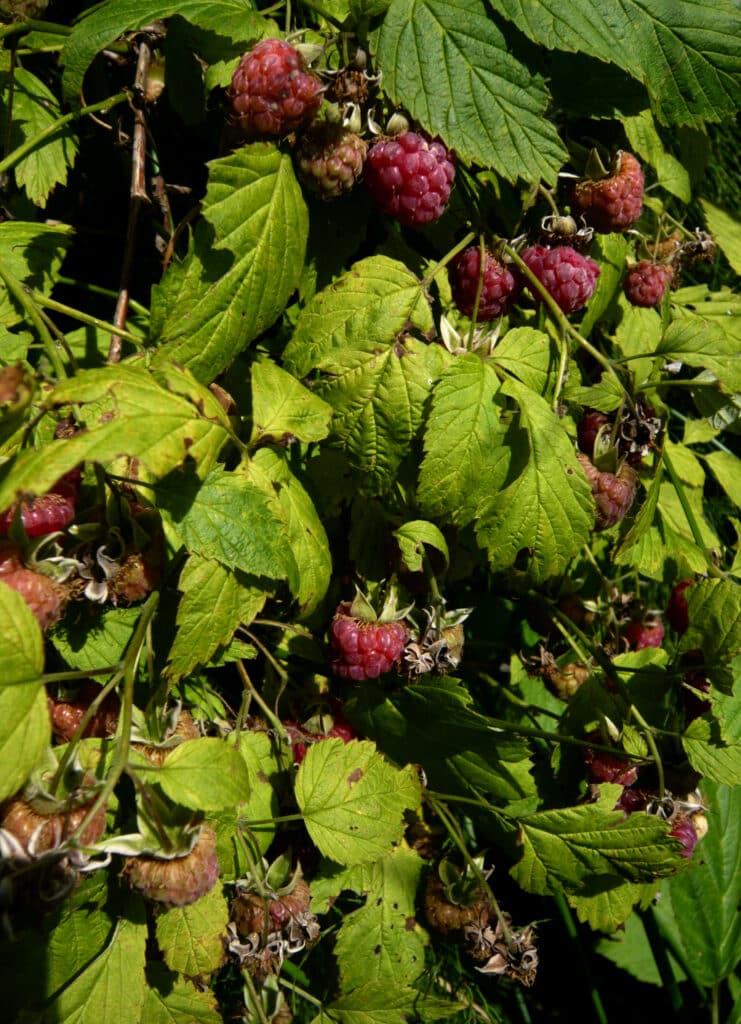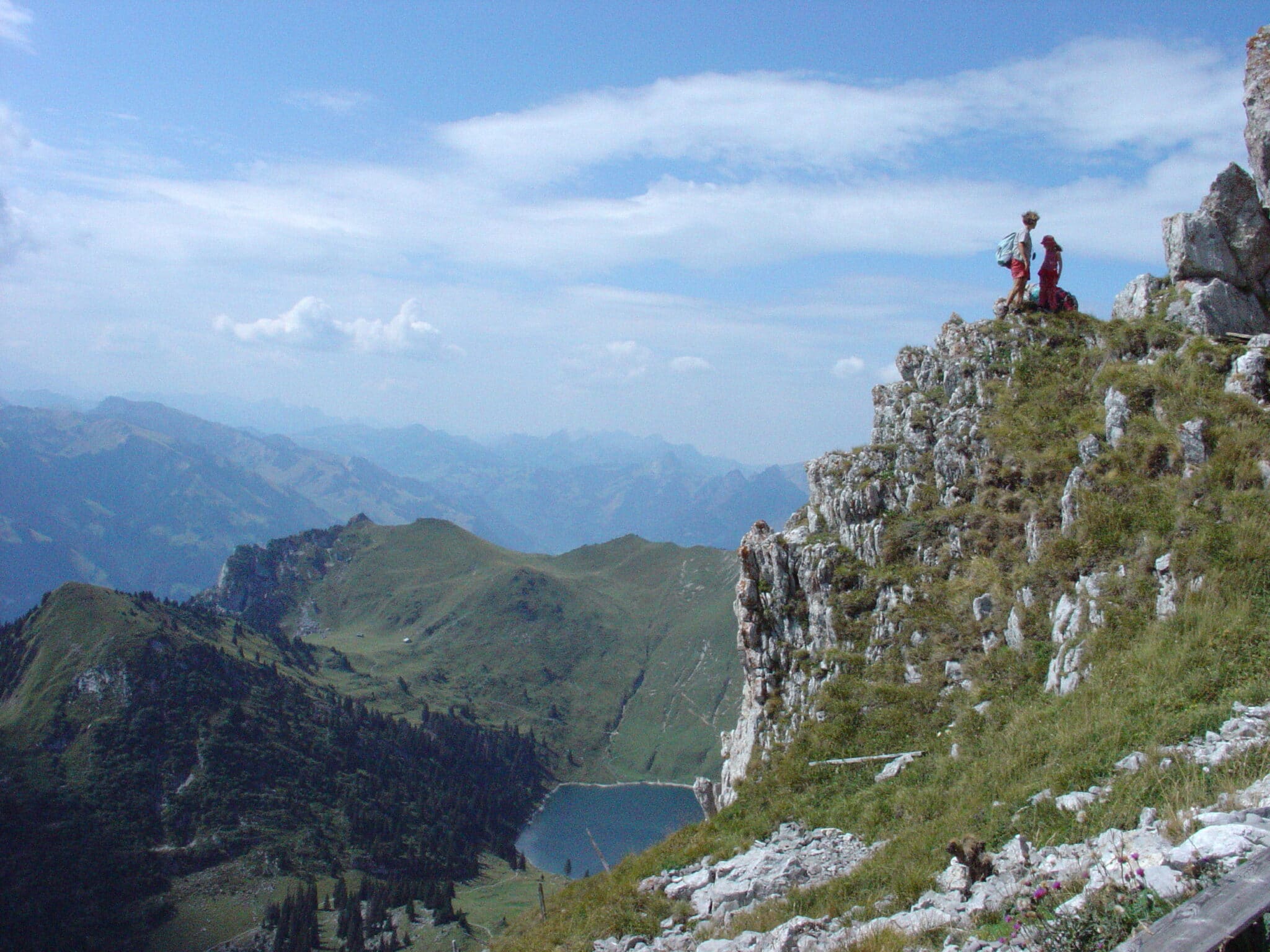Every year, between my second and fifteenth birthdays, we spent our vacations in the village of Arêches in the Beaufortain region of Savoie. An admirable backdrop of mountains embracing wide valleys, flower-covered alpine meadows where crystal-clear streams babble, and high-altitude lakes that reflect the blue of the sky, barely wrinkled by a gentle summer breeze. The bistre chalets smell of resinous wood and hay. Brown cows with gray horns ring their bells relentlessly and lick my hand with their raspy tongues as I hand them bunches of tender grass. Resolutely bucolic!
I owe all the beauty I’ve come to appreciate over the years to my mother. She had discovered the mountains in Chamonix – at the time, the resort had only two hotels – at the age of nineteen. Mountaineering had become her reason for living. It was by climbing the summits that she experienced the feeling of freedom, far from the constraints of man, at grips with raw nature in this world of ice and rock that brings us face to face with ourselves. The birth of her two children curtailed her ambitions, and our walks were nothing more than “cow mountains”. My mother often used this term, and each time I saw behind her smile a veil of fleeting sadness: she had sacrificed her passion for us. But she was going to pass the virus on to me.

It seems like only yesterday that I was a toddler, still wearing a checked cotton romper, but with my feet already shod in heavy leather shoes. What a joy to play on the stony paths leading down to the river… But how steep it is on the way up! I’m learning to adjust my stride to the slope, my breath to my stride. My sister and I carry a miniature canvas rucksack, with pads that my mother has added to the shoulder straps. If the climb is too long and the burden too heavy, I sing songs to myself and the time passes more pleasantly. And what a pleasure it is to reach the goal!
We often go to the edge of the Argentine. I could say with my eyes closed when we get there: the roar of the torrent and the coolness that contrasts pleasantly with the summer heat betray its presence, but above all, the sweet smell of butterbur permeates the air. It’s an ambiguous scent: half a century later, it’s hard for me to say whether I like or loathe those wet jungle whiffs. Butterbur plants have enormous leaves, nicknamed “devil’s hats”, which my sister and I use as effective headgear. They’re very curious plants, producing large clusters of upright pink flowers in spring, emerging directly from the ground. It’s only after they’ve produced their fluffy balls, resembling a multitude of miniature dandelions, that the leaves appear. Shy at first, they quickly grow to an imposing size, sometimes over a metre high and half as wide. Their mass covers the banks of the torrents with a veritable virgin forest where young explorers can lose themselves.
The pebbles on the beach are studded with shiny ore: there’s no doubt about it, it’s gold! We run excitedly in search of the most beautiful, and return loaded with pebbles that end up in the hotel courtyard. On the rocks, we pick the plump leaves of the sedums, which resemble juicy banana bunches and, along with the miniature “artichokes” of the houseleeks, form the bulk of our grocery stock. These plants both belong to the Crassulaceae family, from the Latin crassus, meaning thick: they are succulents. Sedums have elongated, cylinder-shaped leaves and white or yellow flowers, while houseleeks have flattened, densely intertwined leaves and bright pink flowers. Most species grow on rocks or walls. In France, houseleeks used to be planted[1] on the roofs of houses to protect them from lightning. I saw it used again recently in Serbia.

Discover our online course designed by François Couplan, an internationally recognized expert in ethnobotany with over 50 years’ experience. With 30 modules, 120 courses and high-quality theoretical instruction complemented by field courses, this unique three-year training program will enable you to become a professional in the uses of plants. Accessible to all, it explores in depth the relationship between man and plants, opening up exciting professional opportunities. Join us to deepen your knowledge, explore the plant world and develop a rewarding relationship with nature.
Gathering is often the goal of our walks. Then, the world is a mystery that reveals itself. Entering the undergrowth, you’d never guess what wonders it holds. But I perceive them. Like Alice, the child in me has gone through the looking glass and discerned a thousand details full of life, ignored by adults. Tiny beetles gambol among the moss festoons; a myriad of midges dance in a ray of sunlight that pierces the thick foliage, their wings shining like diamonds; the bluish lichens hanging from the branches give off a heart-warming perfume; a trickle of water glugging modestly over a few pebbles immediately becomes an impetuous torrent with roaring rapids.
I still remember the intense emotions I felt when, in the shade of the spruce trees, I discovered the orange buds of the apricot-scented chanterelles in the moss. You have to be able to detect the slight bulge in the carpet of needles that signals the presence of a budding fungus, and circle the trunks to catch those that haven’t had time to hide…
Perseverance is required to learn to identify these many fruits of the earth. The cap of a boletus is decorated with tubes rather than lamellae.[2]. Milkshakes have funnel-shaped caps and sturdy stems, and their flesh breaks like chalk, dripping bright orange milk in the delicious milkshake, and brick-red in its much tastier cousin, the sanguine. The ominous name of trumpets of death, black relatives of chanterelles, should not prevent you from eating this excellent mushroom. The famous rosés des prés are easily recognized by their pinkish lamellae, which turn a lovely chocolate brown, making them easy to distinguish from the white lamellae of the amanites.

It’s not just a question of pure science: we are, above all, mycophagous.[3]. I proudly carry my booty into my mother’s basket, where each species is carefully arranged to avoid possible – and potentially dangerous – confusion. Back at the hotel, we entrust the product of our harvest to Jean-Claude, the cook, who prepares a drooling omelette rich in gustatory emotions. As well as the succulent dish, I think we also revel in the envious glances, sometimes tinged with concern, of other guests who don’t dare to enjoy nature’s prodigalities as we do.
There are less controversial, more immediately delectable pickings. These include raspberries, blueberries and wild strawberries. Wild raspberry bushes grow along roadsides, in clearings and on scree: they love the sun, which allows their velvety purple fruits to gorge themselves with a sweet, fragrant juice. So, on certain auspicious afternoons, we set off, buckets in hand, to visit our raspberry patches. The naughty ones hide under leaves with a whitish underside, but they don’t stand a chance with us: our nimble fingers pick them and divide them up in an orderly fashion – two in the mouth, one in the bucket.

It’s a feast! We don’t stop until we’re full, our noses are smeared and our buckets are almost full. Then we return more slowly than we came, with heavy bellies but happy hearts, savoring the bliss of a day spent in the woods. Back at the hotel, our regular cook prepares a raspberry tart on a bed of crème pâtissière, which this time is also enjoyed by our family friends.
Some raspberries have a distinctive, musky taste. I’m particularly fond of them, and feel a great sense of comfort when I happen to bite into one. Much later, when I discovered coriander leaves in Mexico, I realized that this pleasant aroma actually comes from the secretions of a bug that has landed on the fruit… Coriander has precisely the same flavor, hence its name, taken from the Greek koris, which refers to the insect in question. Our likes and dislikes are a matter of culture: if I’d known that a bug had transmitted its scent to my raspberry, I’d probably have spat it out with disgust!

Among our other pickings, blueberries play a key role. The trick is to get there before the professional harvesters have already passed by with their “rakes”, whose function intrigues me: why damage the plant, and deprive yourself of the pleasure of feeling the little blue beads between your fingers, dosing your force to detach them from their support without reducing them to mush? As for hunting wild strawberries, it’s not a question of profitability, but pure pleasure. It’s essential that the strawberries are ripe and a beautiful dark red: leave the pale ones to ripen a little longer, as they’ll only present you with an acidic blandness.
Sometimes we set off for the day, equipped with the picnic lunch we’ve been given at the hotel. We climb along narrow paths through flower-filled meadows. The thick grass sweeps across our calves, while the tallest plants caress our arms. As we pass, we make out the hogweed with its tall, hairy stems like a bear, and the yellow-flowered salsify, a kind of tall dandelion on a stalk: they too contain a white latex, but sweet instead of bitter, and their young flower buds are delicious eaten as they are. Along the way, we strip off the leaves of the daisy and peck at the nectar-filled flowers of the red clover, gathered in graceful pompons whose distinctive color stands out against the variegated greens of the meadow. The rhinanthus amuses us with its comical, curved, bright yellow flowers with a small blue horn, resembling an animal’s snout – its name comes from the Greek rhinos, nose, and anthos, flower. My mother explains the flora to us during stops we purposely make. Her kingdom is the mountain pastures. In her bachelor days, she had compiled a mountain herbarium and, although she is not a botanical specialist, she has a more than respectable knowledge of what grows up there, which is more than enough for us beginners.
The beauty of alpine lawns surpasses anything that exists below. The plants are smaller because they have to huddle close to the ground to withstand the extreme frosts of winter, but the colors of their corollas are more beautiful.[4] are brighter than on the plains. It’s not uncommon to see tiny plants with flowers that are enormous for their size: they need to attract insects at all costs and take advantage of the short summer to ensure their progeny. Alpine meadows are a symphony of colors like no other. The number of different plants per square metre[5]the variegated patches of flowers, the unexpected shapes of the various elements of the plant world harmoniously integrated with the mineral, all combine to compose a picture that a painter would be hard pressed to imagine.

How can I fail to marvel at the graceful cottongrass with its soft, cottony tassels, or exclaim at the sight of the tender spring gentians, so brightly blue that no human being could ever have created it? I gaze pensively at the rhododendrons, their blossoms hesitating between pink and red. And when we finally discover a bouquet of edelweiss, my heart leaps with intense joy. The “flowers” of this mythical mountain plant are in fact made up of flower heads, which in turn are made up of smaller flower heads, all surrounded by modified, densely hairy, whitish leaves that have taken on the appearance of petals – a perfect trompe-l’oeil…
We often picnic by a stream or on the edge of a mountain lake, turquoise set in the jade of the alpine pastures. Each hike brings with it a host of superb novelties, where it’s not all about plants. It’s also a feeling of freedom, a sense of well-being due to space, an aesthetic perception of the perfection of the landscape. Even as a youngster, my throat tightened with emotion at the beauty of nature, as I gazed down from a grassy knoll at what for me was infinity. But the weather can’t be good every day, and sometimes storms break out. The temperature plummets in a matter of hours, and the clouds reduce the world to nothing. Yet I’m fascinated by the waterfalls that cascade from rooftops and form muddy, pebble-carrying rivers in the streets. At the thunderclaps rolling down the mountain, I shudder with a troubled pleasure where fear quickly gives way to a feeling of exaltation before the grandiose spectacle of nature in anger. I marvel at the power of creation, as well as at its friendlier aspects. And after the rain, the fine weather: I begin to understand that “good” and “evil”, “right” and “wrong” are inseparable. You can’t have
[1] Its name comes from the Latin Jovis barba, the beard of Jupiter, god of lightning.
[2] If you look at them from underneath, you can see holes, not parallel blades of fragile flesh.
[3] Mushroom eaters
[4] The corolla is the flower’s inner envelope, made up of the petals.
[5] Many are miniature, and you have to bend down to see them.

